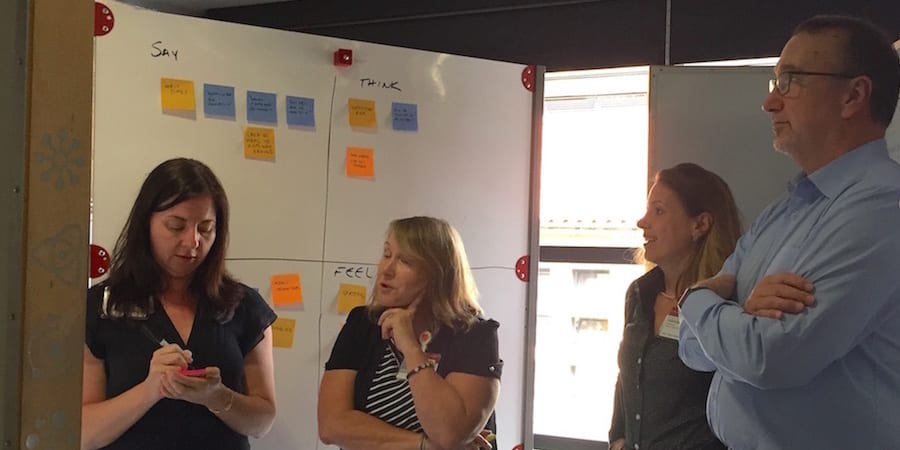
UK government needs a holistic approach to lean management
RESEARCH – A recent report by the National Audit Office looks at what works and what doesn’t when lean management is applied in UK government organizations.
Words: Alec Steel, Head of Operations and Process Management specialism, National Audit Office
At the National Audit Office, we have been observing government through the management system lens for the best part of seven years, either as part of our regular audit work for Parliament or at the request of specific government organizations.
Some of the things we found during this period of time were discussed in a previous article here on Planet Lean. Since then, in September 2015, we produced a new report, Managing business operations – what government needs to get right, which looked at the UK government’s capability in managing and improving its business.
By systematically assessing a total of 32 government entities and 86 operational areas, we have built a wide range of knowledge about some of the problems and patterns present across the UK government.
The report is an opportunity to share what the NAO is learning about what seems to work best when government organizations adopt lean or other improvement approaches for managing and improving their business.
So, what is it that we found out?
We’ve generated substantial data from assessing government and our analysis has highlighted four critical areas for organizations to focus on:
- Customer focus;
- Understanding and managing the end-to-end system;
- Using information to trigger change in your business;
- Creating an environment in which people can manage and lead in a way that allows them to achieve good operations management.
Not only are these areas critical for organizations to “get right” in order to become better at managing and improving their business, but they are also the areas that many government organizations seem to be struggling with.
The NAO’s work also highlights the need to understand and reflect on the impact of different approaches to change, as we have identified problems with both top down structural change or project by project improvement initiatives.
KEY FINDINGS
The interesting thing about these four areas is that they are formed of characteristics from the operational and organizational layers of our assessment. The NAO’s framework looks at five areas in each business – Strategy, Information, People, Process and Improvement – and at two layers – organizational and operational.
Exhibit 1, below, is an example of relationships between parts of the management system:

Analyzing the relationship between how an organization performed against one of the two layers (organizational and operational) and its overall maturity showed us that, perhaps intuitively, there is actually no relationship at all.
In other words, we found that the government organizations that focused solely on their organizational layer (the “corporate centre”) had very little impact on how services are delivered.
And those organizations taking a very stereotypical approach (consultants-led “lean programs” or using a separate internal continuous improvement team) were able to boost their improvement capabilities, but nothing else – their business results were not sustained and were limited to the operational pockets that improvement activities focused on.
This finding confirmed our idea – and this is our biggest takeaway – that a holistic system is needed to make change stick. The individual parts of the management system don’t exist in isolation. They need to seamlessly interact with one another. The overall effectiveness of the management system is dependent on the capability and interaction between its component parts.
Our evidence suggests that different approaches are necessary if government is to improve, but also that improvement is indeed possible. There are many successful examples out there, both within UK government and internationally. One interesting example is Results Washington, the improvement initiative set up by the government of Washington State, USA (Planet Lean has an insightful interview with them here). At the NAO, we became very interested in Results Washington’s work because it reflects a combination of two of the four challenges UK government faces: the ability to understand how different parts of the end-to-end system interact for the benefit of the citizen.
Two important lessons we learned from the experience of Washington State government (which I had the pleasure to visit a couple of times) are how to make end-to-end systems work when responsibility is shared across government agencies and the absolute focus is on the end user.
The importance of user perspective is highlighted by our own work at the NAO: our research has revealed that the single characteristic that is most correlated to overall maturity across the management system is how an organization responds to changes in customer demand. So an organization’s understanding of its customers and types of demand, and its capability to deal with the variability in that demand in an agile and responsive way are critical.
There are a couple of other important findings from our recent report. One is that organizations are more likely to perform well in the improvement domain of our management system test if they demonstrate capability in the people section. This might, in part, explain why the benefit of improvement programs can be short lived if they focus on doing improvement activity in isolation.
Our final discovery relates to the broad applicability of principles in approaches such as lean. We also often hear the argument that these principles are only applicable in organizations with a focus on front-line delivery (and not in those in UK government that are more focused on creating policy) and that it can’t be applied in complex operations. So we ran a test to see whether complexity or the type of organization has an impact, and found that neither was a determining factor in the capability of the management system or a barrier to the adoption of improvement principles. Interestingly, those organizations that are more policy focused actually scored a little bit better than those with a big operational scope.
These findings demonstrate that we are not holding the UK government up to a test that is unreasonable: this is what all good organizations are looking at to try and improve.
SO WHAT?
Many of our findings are not revelatory, but a confirmation of what we already thought true. It is important, however, that we test our assumptions, or they will just remain hypotheses and nothing more.
It is our own “so what?” question that we also want to answer. One of the things the organizations we assess are most interested in is finding out where they can go to learn how to improve. What we see is that there is not one organization that has “cracked it” and completed a full turnaround. Instead, there are parts of organizations that have done incredibly well in specific areas. This is what makes collaboration and sharing across government so important. But it is also critical that every organization applies learning within their own situational context and thinks about learning from the “how” rather than copying the “what”.
Whenever an organization asks to see another one that is making great inroads into the improvement of services, we start by asking them what performance gaps they are trying to close. We then use the answer to match organizations up. Often it brings organizations together that never thought they would have something in common.
Bringing examples of good practice together and sharing information on them across government has huge potential to improve the sector as a whole.
For the NAO, the report is only a stepping stone in the long term goal of helping people understand their businesses better. Our intention is to start using this content in a way that will be relevant to different groups of stakeholders within an organization – what is it that they can individually or collectively start thinking about to improve their business? We want to put knowledge in the hands of those who can do something with it. Whether we succeed or not depends on our ability to get people to pick this knowledge up and run with it.
THE AUTHOR

Read more


INTERVIEW – Last month the Museum of Failure opened in Sweden. We caught up with the curator, who tells us what the museum is all about and why failure is now “cool”.


FEATURE – As inflation bites, the author offers us an insightful take into what it really means to understand a company’s costs. Hint, it doesn’t involve passing them on to customers.


WOMACK’S YOKOTEN – This month, the author looks at the production line, a century-old idea that still fascinates us, reflecting on how lean thinking has changed it.


PROFILE – In this new section, Planet Lean features some of the most inspirational lean leaders out there. For the first profile, we have selected James Hereford, a former high school teacher who is now leading his third healthcare transformation.

